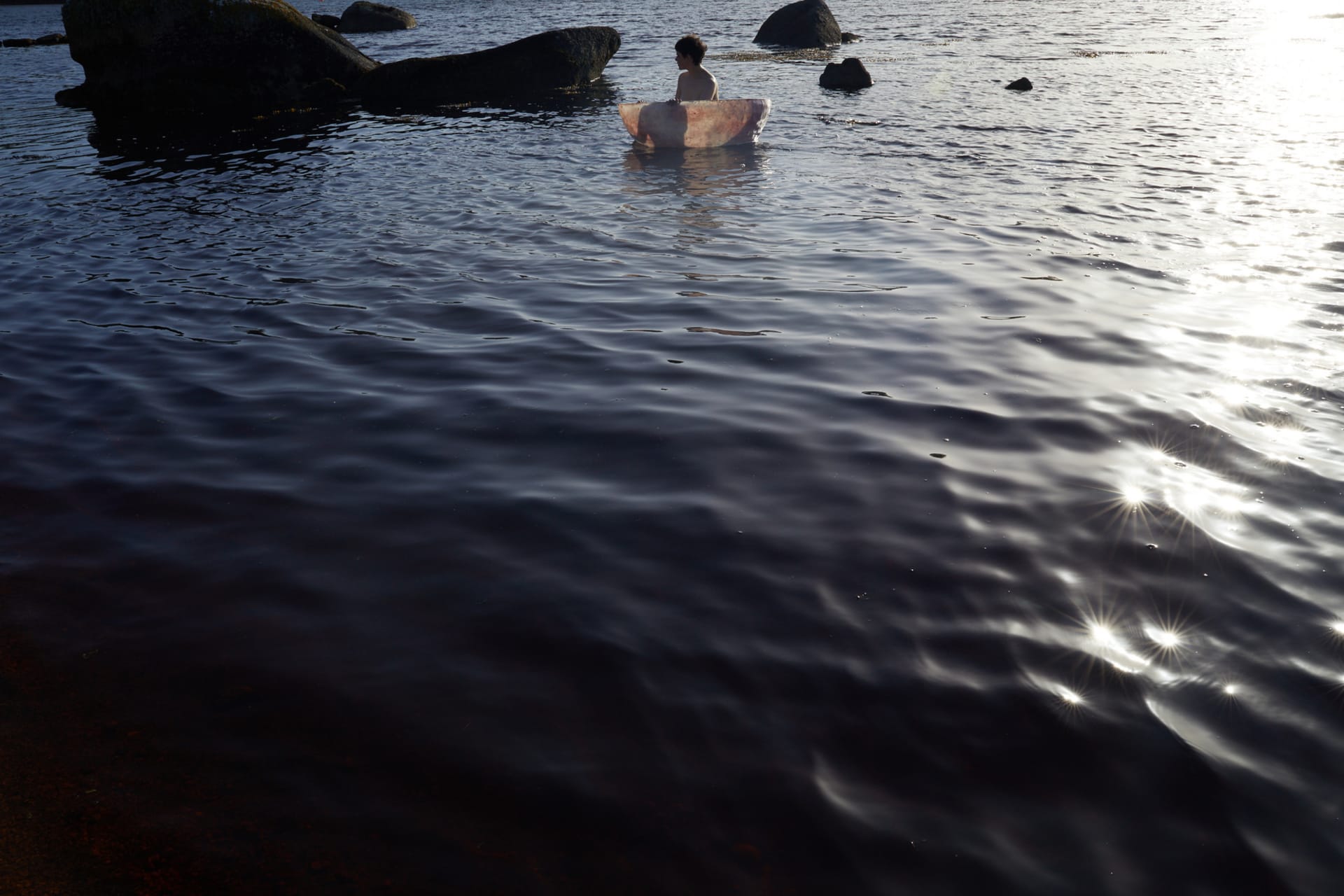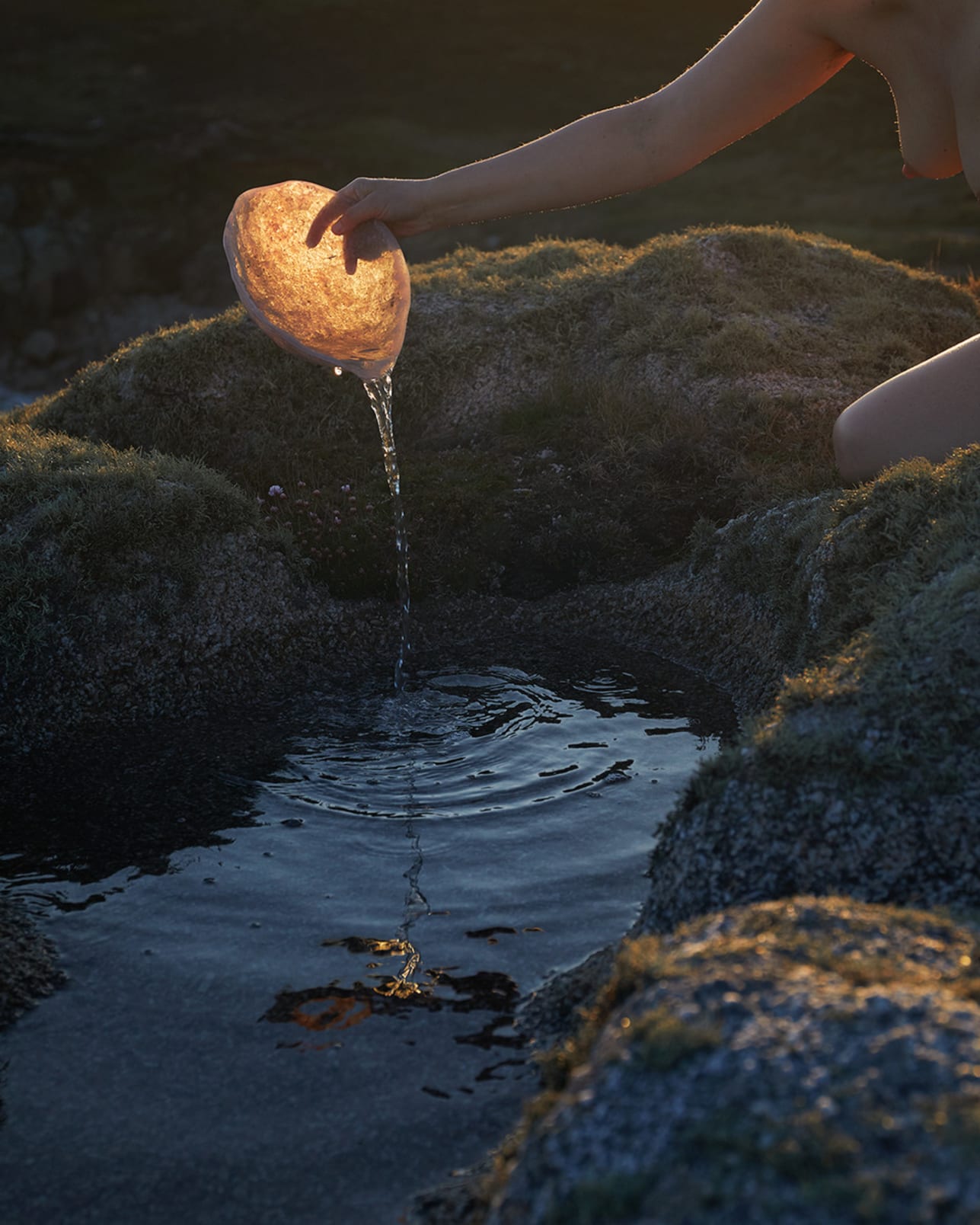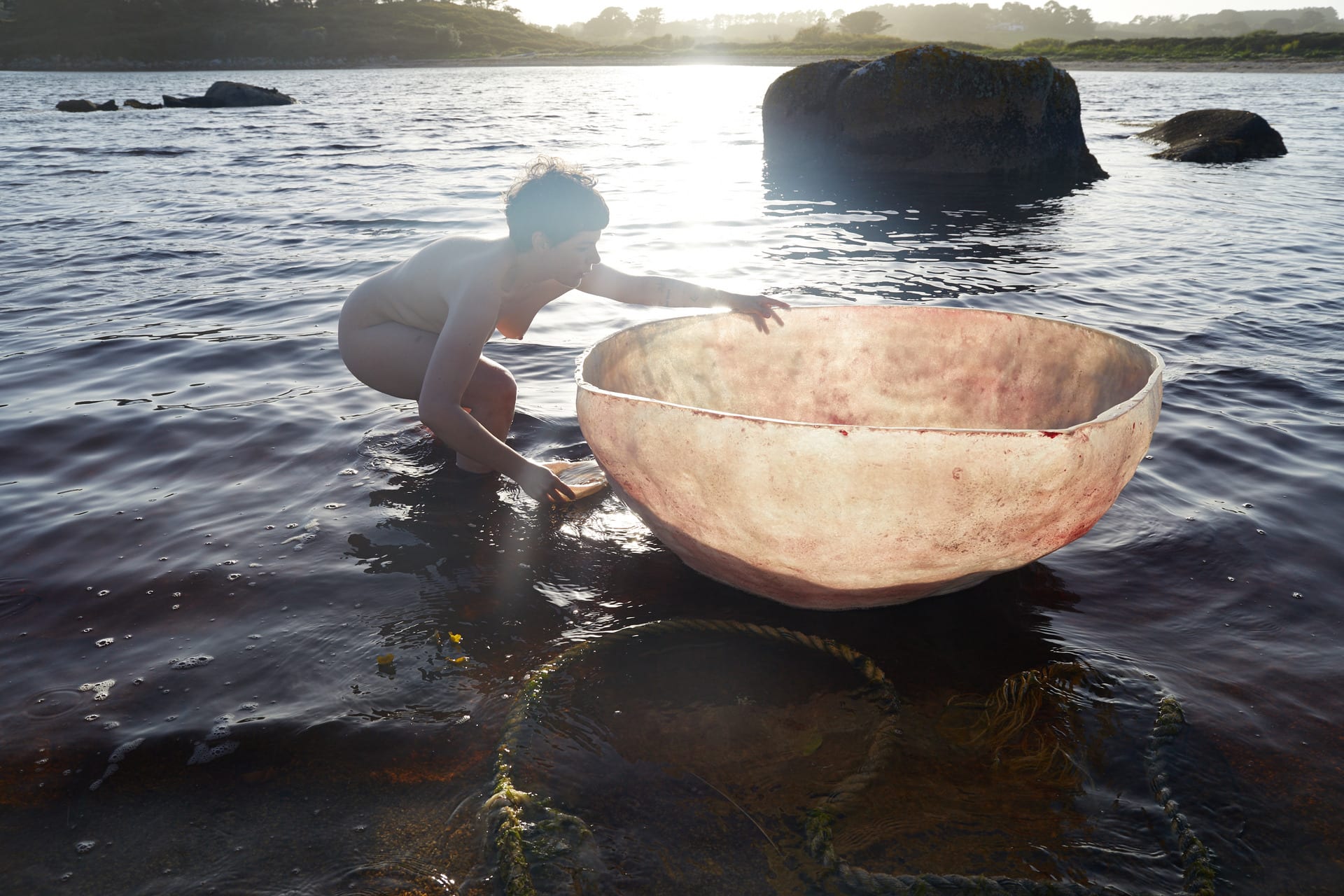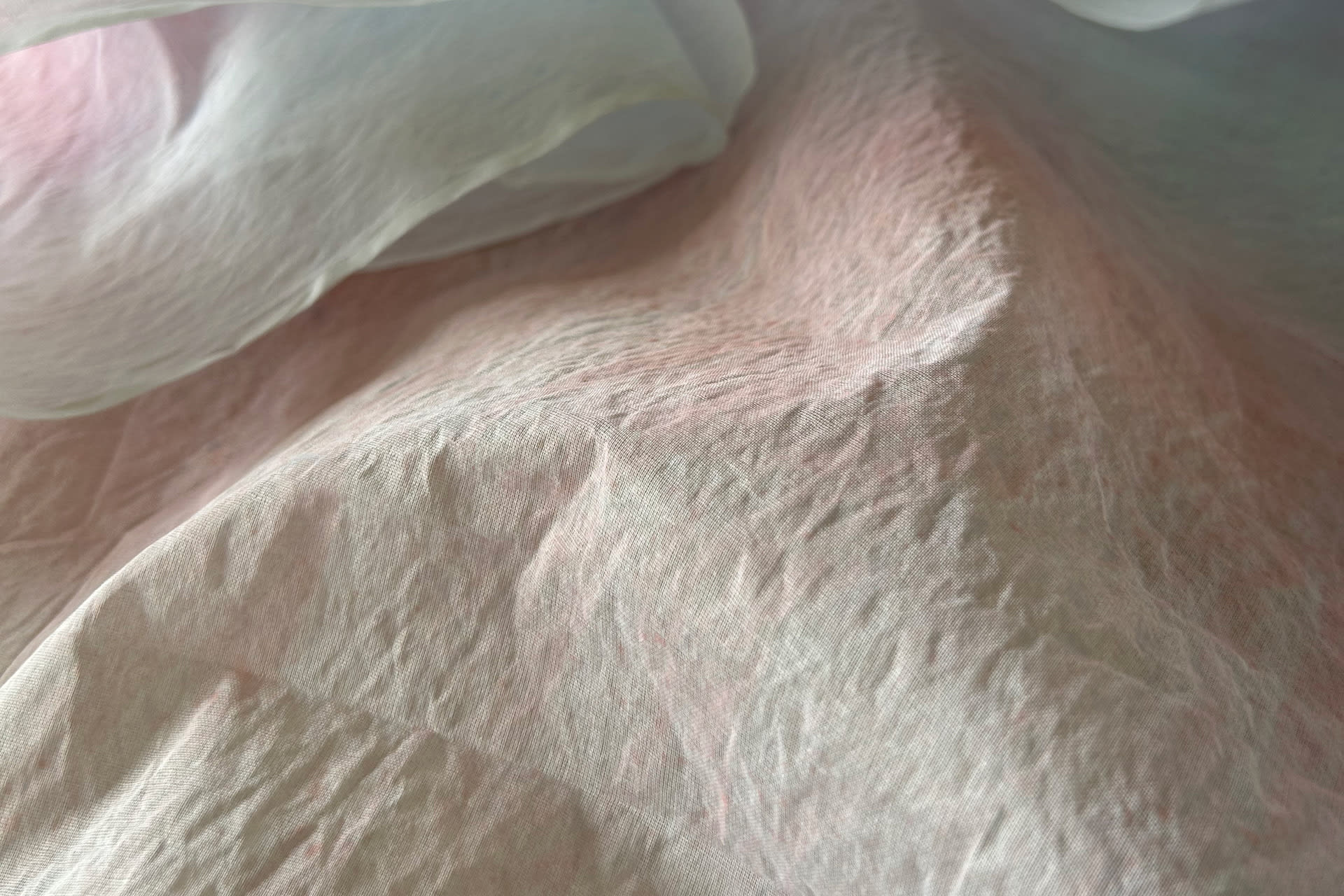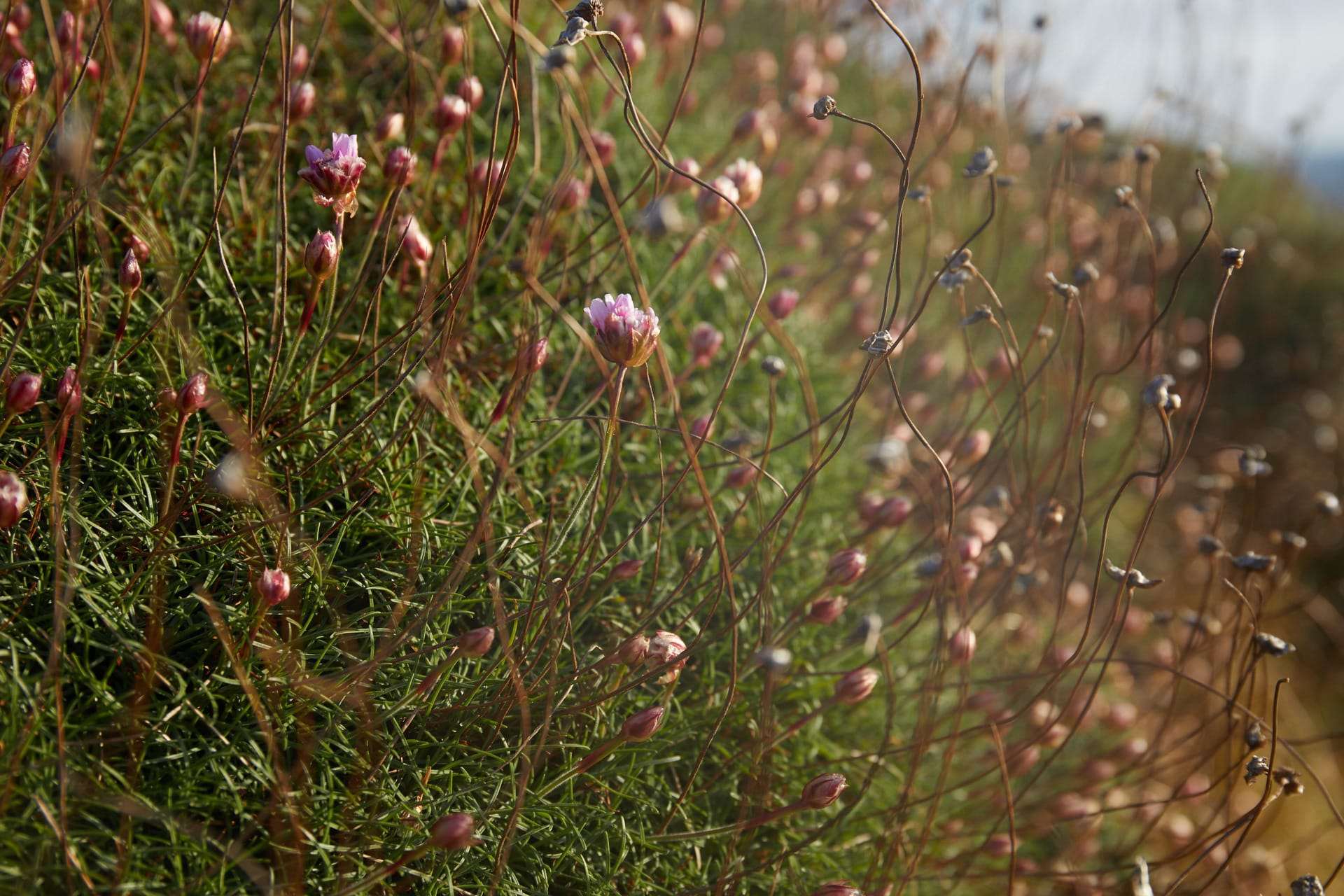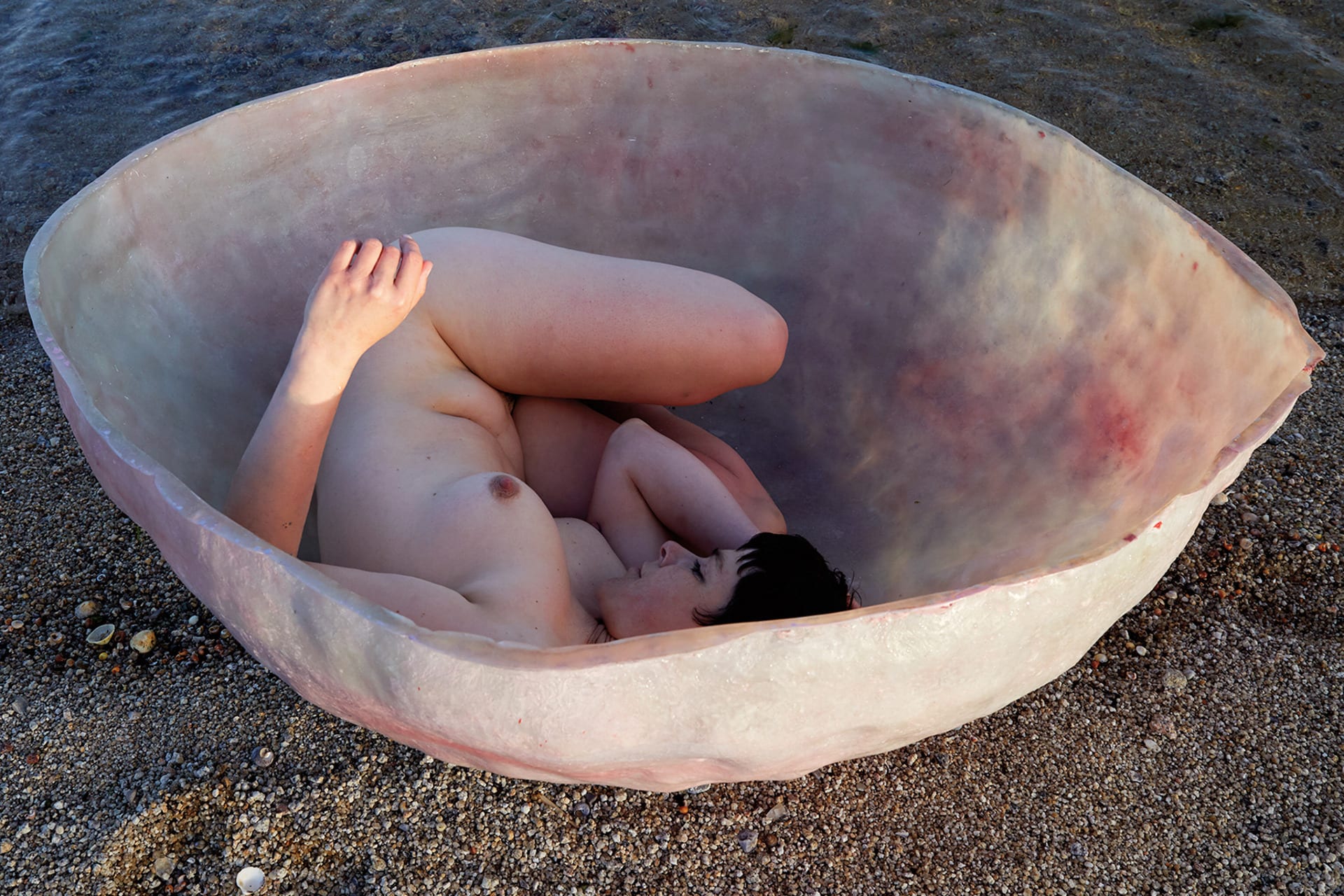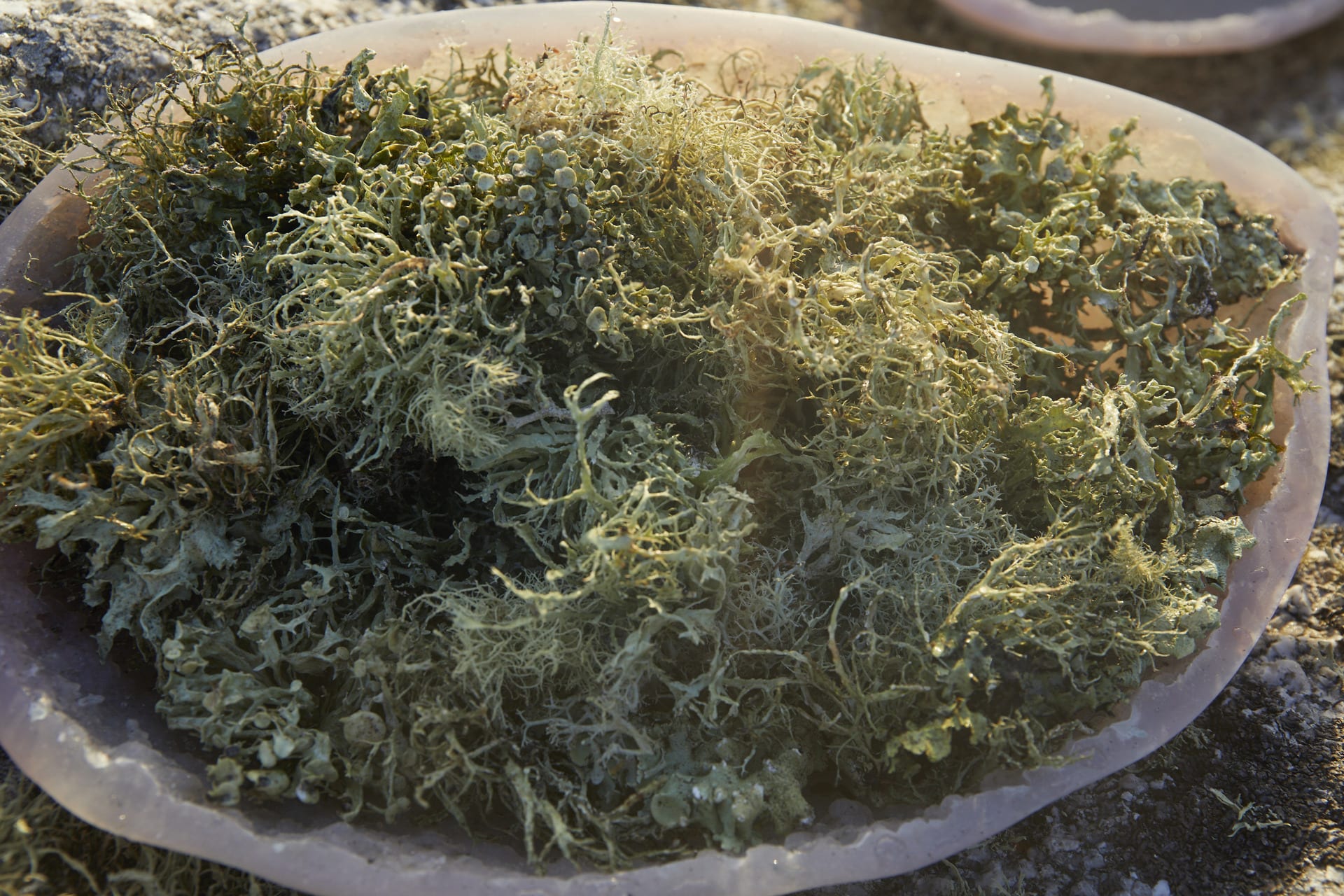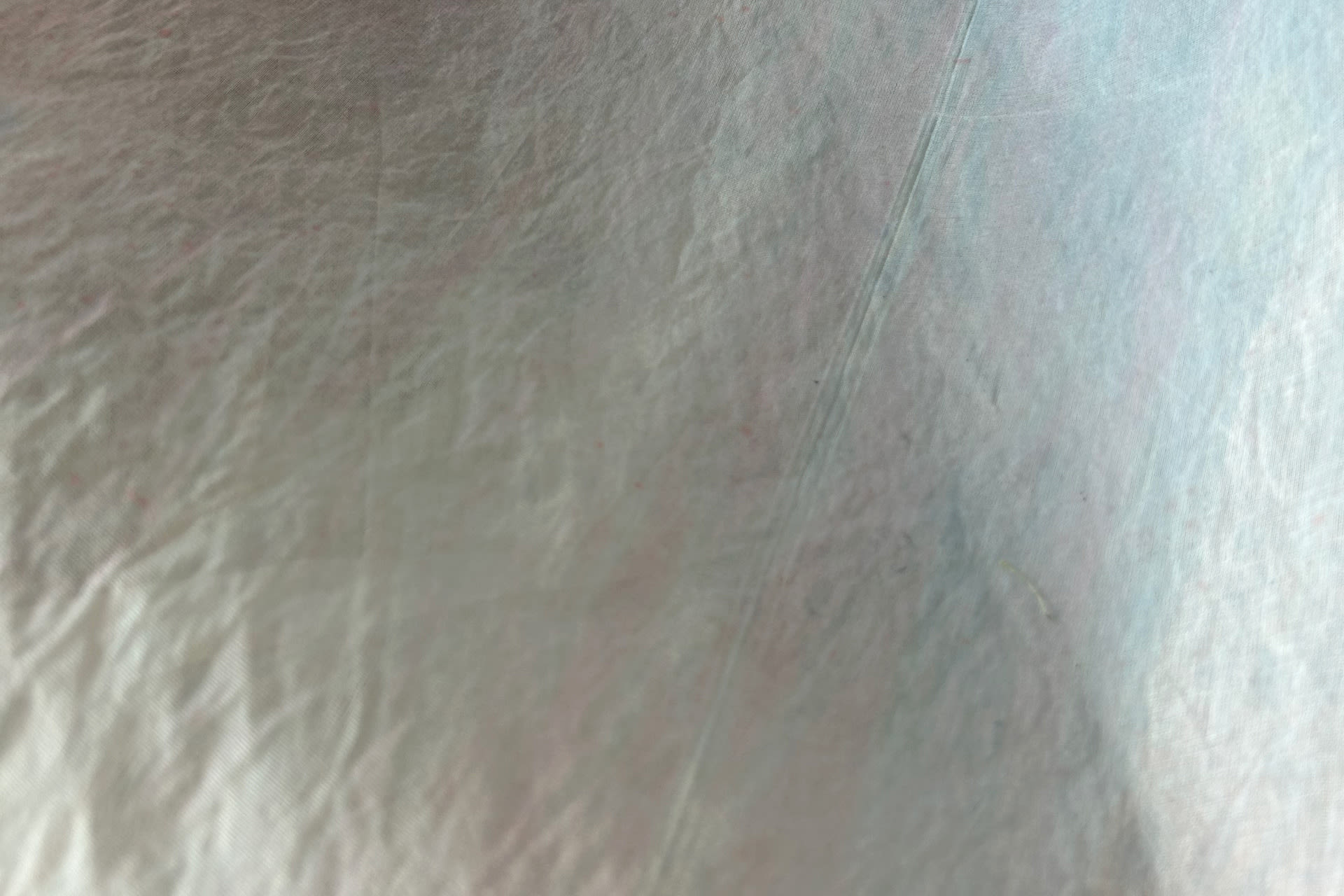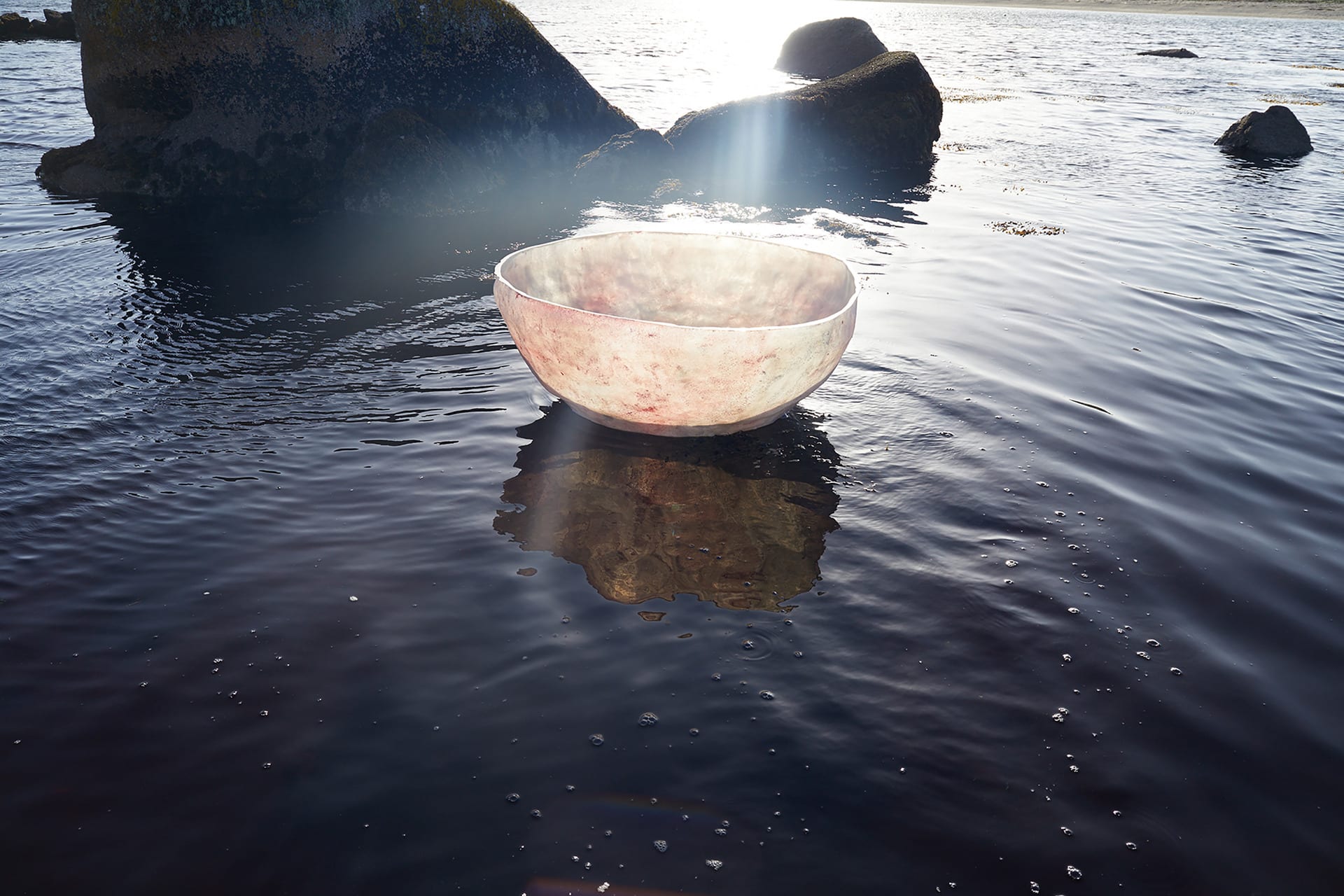In this body of work ~ The Way of the Eel ~ I have been researching localised traditional anomalies from the Isles of Scilly. I explore how mythic material can be used as tool, not only for personal development, but also collectively. Myths can be imagined into - stretched, broadened, inflated, deepened - to help us envision ways of treading new paths that diverge from our current societal trajectory and instead wind into a brighter, kinder, less individualistic future.
“Just as fungi originally taught plants how to root into the soil, so myths teach us how to root into relation with our ecological and social ecosystems. They narrativeize a deep understanding of our connection to more-than-human time scales” - Sophie Strand
The Isles of Scilly are a remote archipelago of islands twenty-eight miles off the coast or Cornwall, where highly place-specific myths and traditions have evolved. Santa Warna is a celtic saint, who drifted to the Isles of Scilly in a coracle from Ireland to become the patron saint of shipwrecks. Making offerings at her holy well, islanders would pray that shipwrecks would not happen, but if they must happen, could they come to Scilly so that we might benefit from the pilotage and salvage.
On the islands, the fresh water supply is precious and precarious, so there was a tradition (still practiced in some households) of placing a live eel inside the water tanks to keep the water fresh. Once captured, the eels would go into a kind of fugue state where they have been known to live up to eighty years, surviving by eating any contaminants that fell in the tank, and so keeping the water safe (if - admittedly - gross) for human consumption.
“Myth is a made thing, not a found thing” - Angela Carter
These two stories present a very localised and specialised attitude to survival, one where the precarious nature of existence creates a reality where we welcome shipwrecks onto our shores and eels into our wells - both things that, under normal circumstances, would be unthinkable.
I used these two mythic artefacts as the foundation to create a cult ~ The Way of the Eel ~ because, like shipwrecks and eels, cults also have a sinister reputation that we would typically avoid. A singular cultist interprets the mythic information blossoming from their surroundings, to create their own specified religious practice. The resulting belief system suggests a method for cultivating agency for ourselves, by generating our own mythology and using that as a map for a self-determined life.
